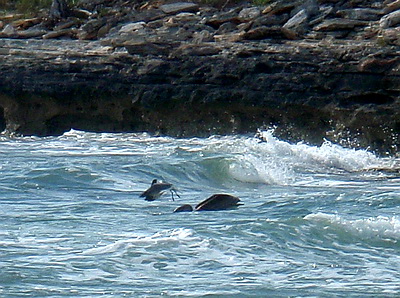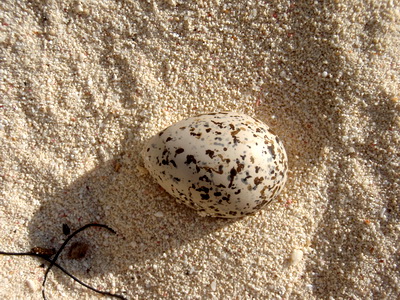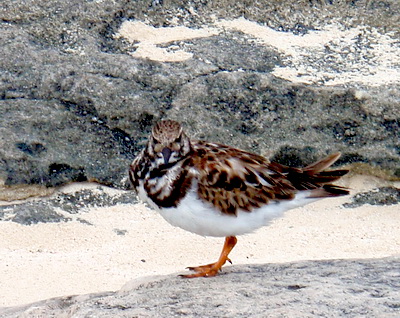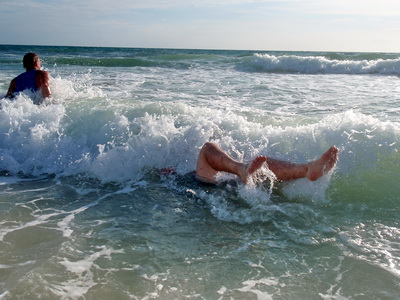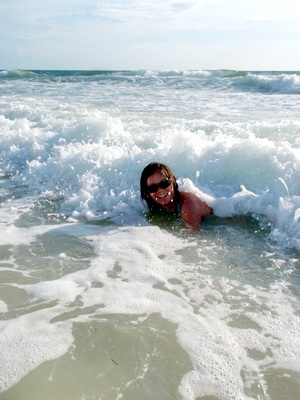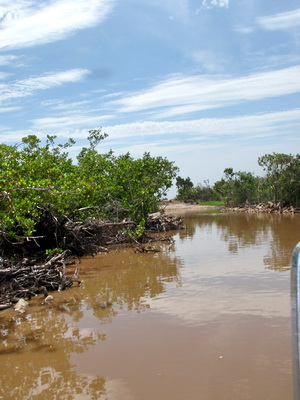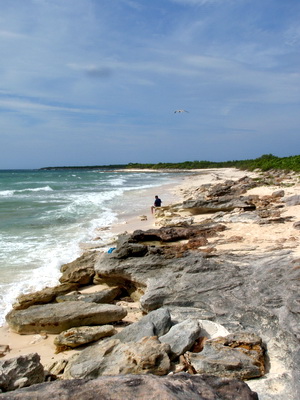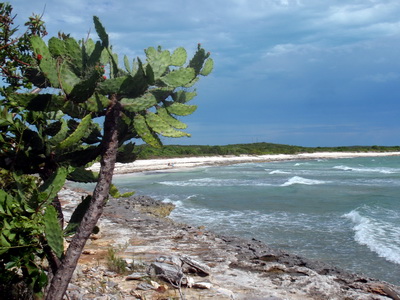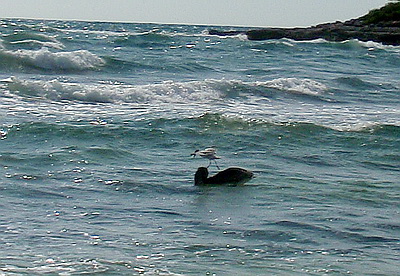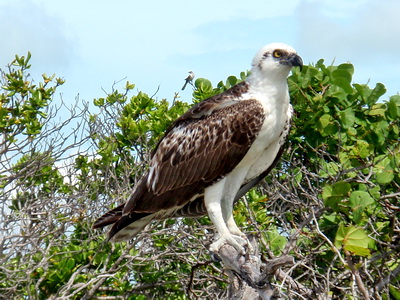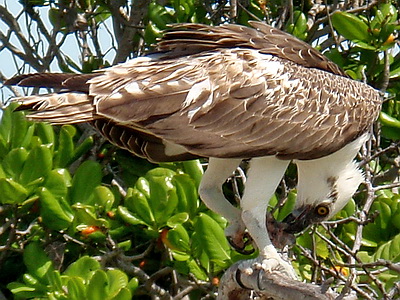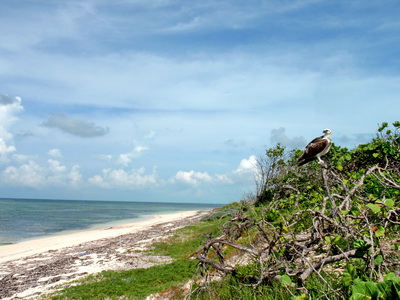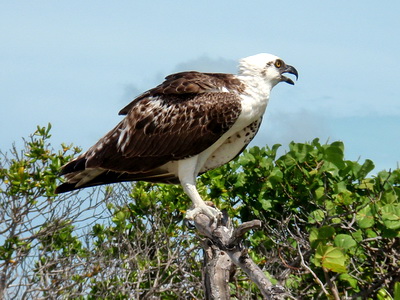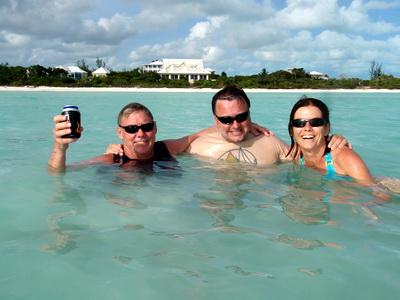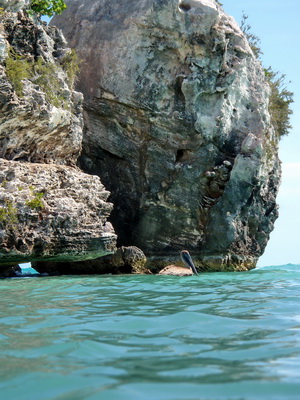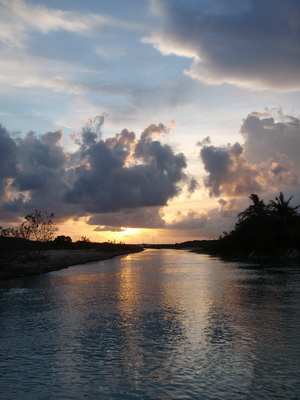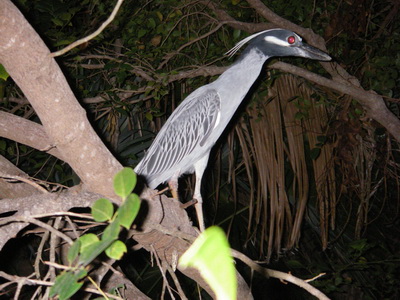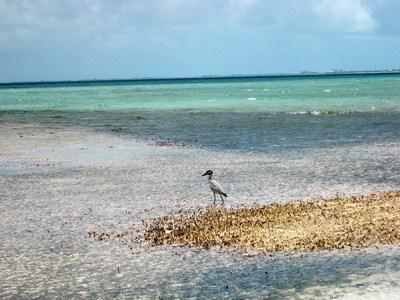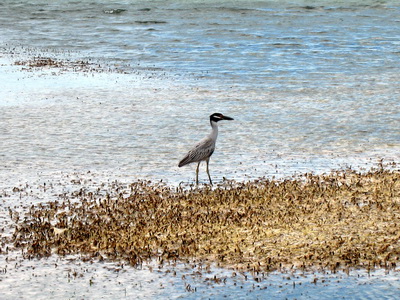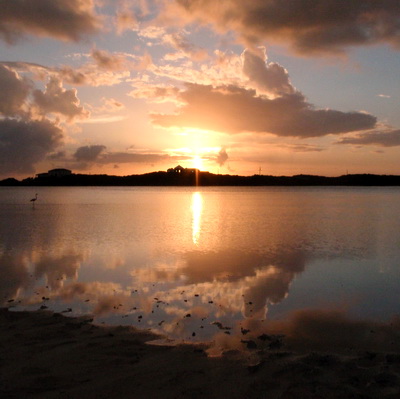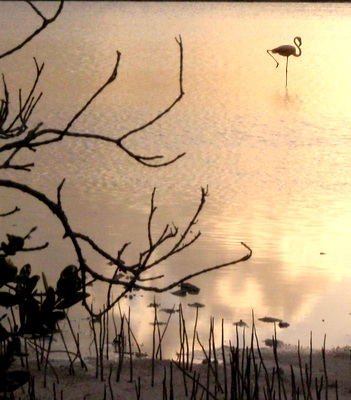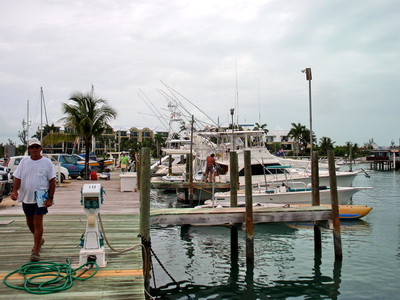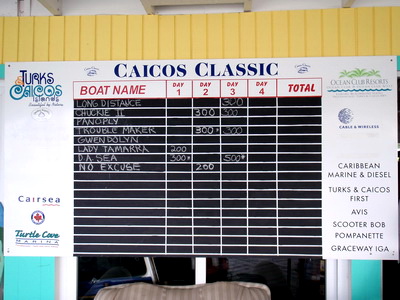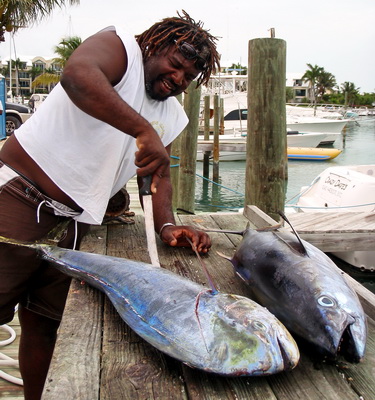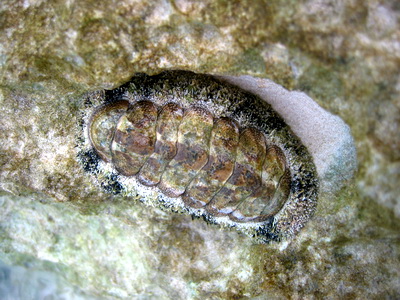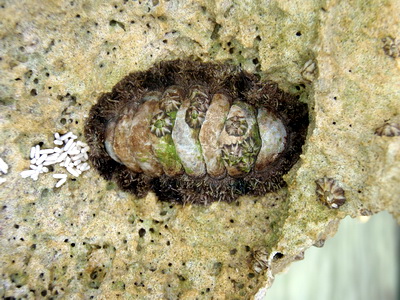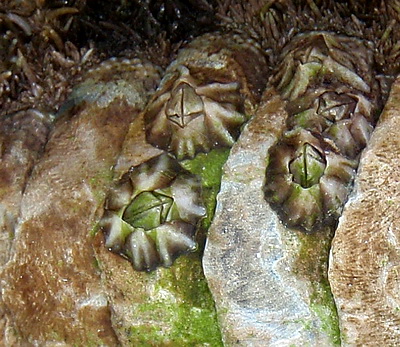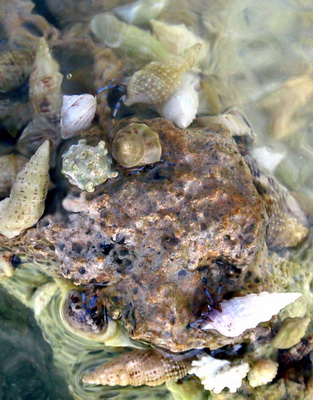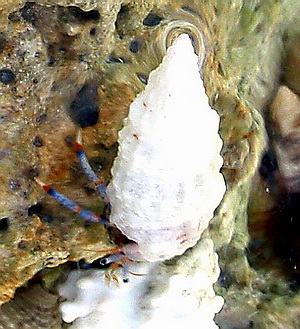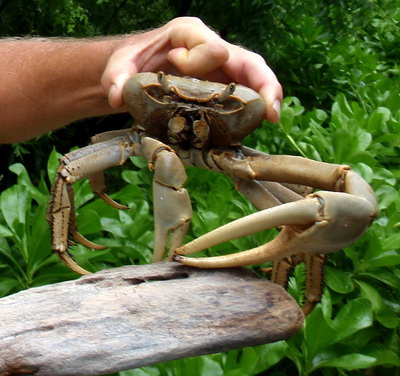We stopped to sit for a while and take in the view of the waves breaking on the shore. You can just make out the Amanyara resort way down at the end of the coastline.
As we walked along the beach towards Malcolm Roads and the Amanyara, I came across something just lying there in the sand. It was an egg and the best I could come up with on the internet was that it looks like a sandpiper egg. This would make sense and most of the birds we saw were Ruddy Turnstones, a common visitor here to the Turks and Caicos Islands.
Once we got onto Malcolm Roads beach we were ready to hit the water. We had such fun riding the waves and playing in the surf.
What a great way to end the day………….playing in the waves as they came crashing into the beach at Malcolm Roads.
Marta

